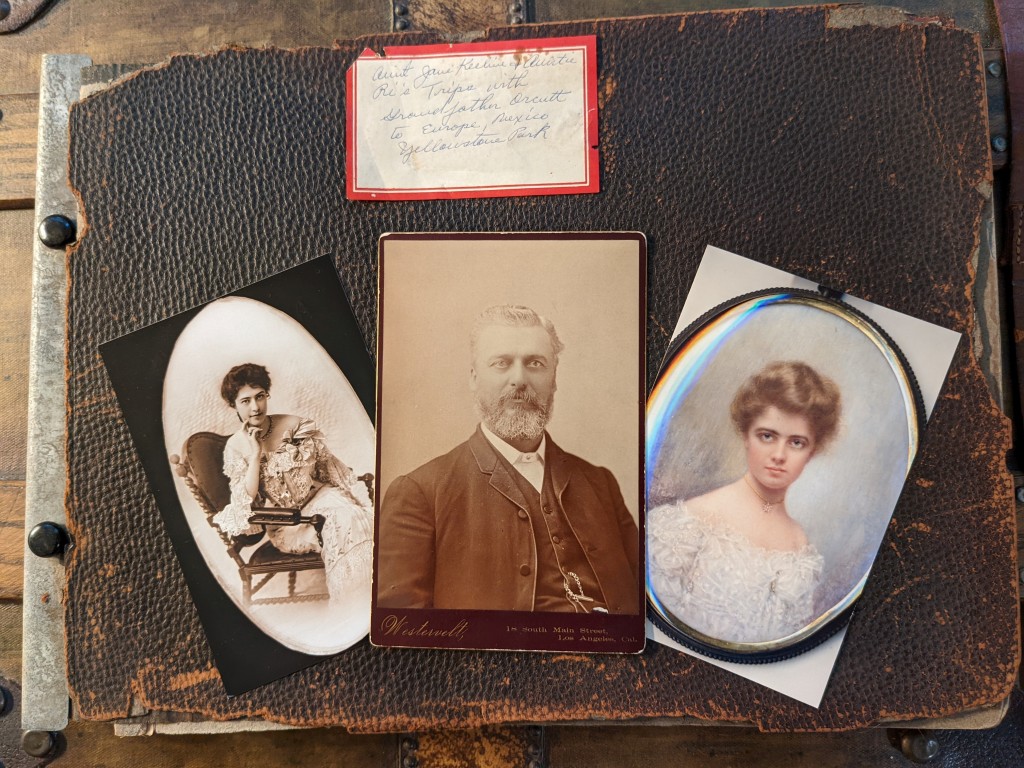
The S.S. Australasian departed Montreal on June 8, 1901, bound for Liverpool, England. On board were three of my ancestors – Clinton Orcutt, my 2x great-grandfather, and his two youngest daughters, Anna Ri and Jane Clare. After ten days at sea, they arrived in Liverpool, England, where they began their 70+ day tour of seven countries. You can read a detailed description of their trans-Atlantic journey here.
However, the Orcutts left me with a puzzle to solve. What cities and sights did they visit? Although I have their photograph album, the 89 pictures aren’t labeled. How many of us are guilty of not labeling our photographs? My grandmother, Anna Jane (Beaton) Hyde, who inherited the album, noted two prominent cities (Venice and Rome) after she took her Grand Tour in the summer of 1929.
Most of the Orcutt’s photographs will be shown in the original black and white. However, I have colorized some of them to improve their visibility and appearance. It is very likely that the Orcutts, novice photographers, were unsuccessful with every image they took. The album includes no photos of the Netherlands or Paris, France. Perhaps, these pictures didn’t turn out?
I created a google-map of the Orcutt’s trip, including photographs from their trip and postcard images from the Library of Congress and Ancestry.com. You can click on each location to view the images.
As I researched for this blog, I read travel handbooks from Thomas Cook, Karl Baedeker, and several late 19th century authors who wrote travel books for the average tourist. I found their writing styles amusing, informative, and a pleasure to read; thus, I have included an assortment of quotes from their books.
ENGLAND
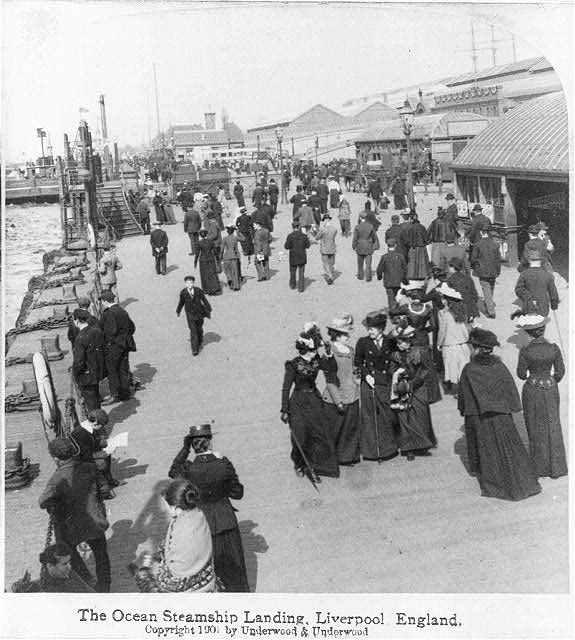
- “MONEY – Foreign Money does not circulate in England, and it should always be exchanged on arrival. A convenient and safe mode of carrying money from America or the Continent is in the shaper of letters of credit, or circular notes, which are readily procurable at the principal banks.
- EXPENSES –The cost of a visit to Great Britain depends, of course on the habits and tastes of the traveler. If he frequents first-class hotels, travels first-class on the railways, and systematically prefers driving to walking, he must be prepared to spend 30-40s (shillings) per day or upwards.
- PASSPORTS- are not necessary in England, though occasionally useful in procuring delivery of registered and poste restante letters.”[1] Baedeker, Great Britain, 1901.
The first image taken after the Orcutts arrived in England is depicted below; perhaps they were in Liverpool? Anna Ri and her companion, Martha Blackwell, posed on a wooden sidewalk. A group of women seated to the left seemed to be waiting for a carriage. As I mentioned in the previous article, I discovered new information about the Orcutt’s trip to Europe in May 2023. They were part of a group of women traveling for three months to Europe. Clinton Orcutt, who accompanied his two young daughters, was the only man in the group.
Previously, I was uncertain about what towns the group visited in England. However, based on their itinerary, they went to the English Lake District, Litchfield, Leamington, Warwick, Stratford-on-Avon, Oxford, London, and Canterbury.
Before departing Liverpool, travelers could give notice to the Station Master and request a luncheon basket be brought to the main train carriage. A Cold Luncheon basket contained half a chicken with ham or tongue, salad, bread, cheese, butter, and half a bottle of claret, stout, or mineral water. The Hot Luncheon basket contained a steak or chop with vegetables, cheese, bread, and half a bottle of claret, stout, or mineral water.[2]
Based on Thomas Cook’s itineraries, the travelers probably toured a few sites en route to London. One guidebook stated that rural England was more delightful than the urban areas and advised tourists to take a trip through the English countryside.[3]
Page two of the album features nine pictures taken in the English countryside at one of the following locations: English Lake District, Litchfield, Leamington, Warwick, Stratford-on-Avon, or Canterbury.

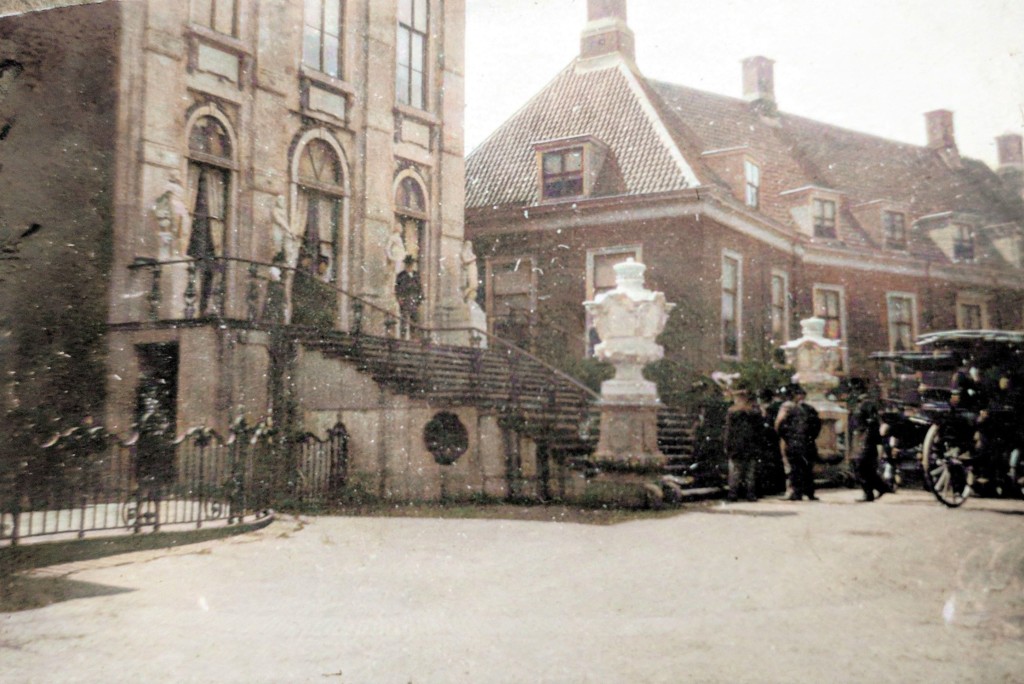


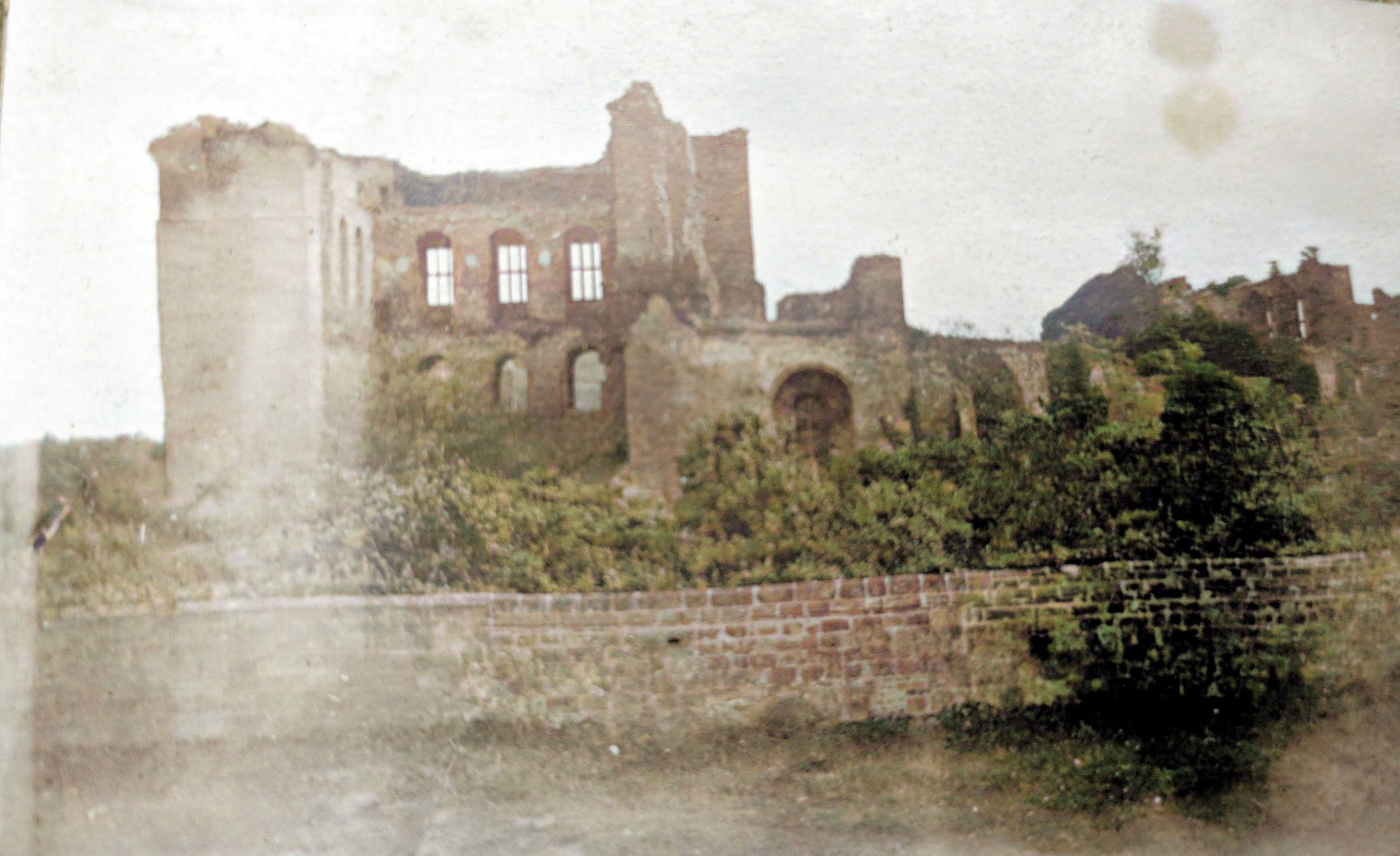
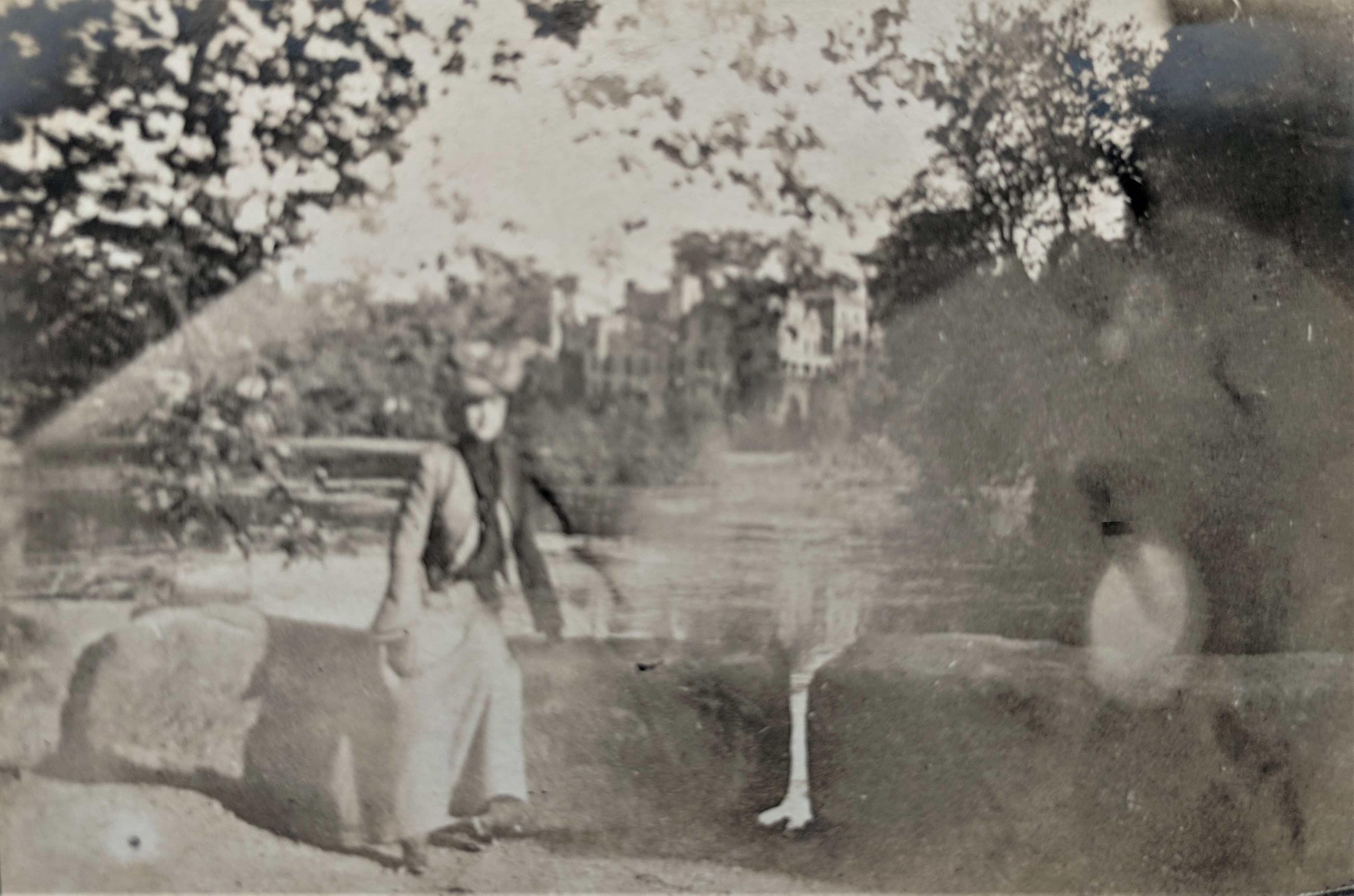
Four pictures were taken in the English countryside. Anna Ri Orcutt posed opposite a castle/manor house on a rock wall. This collage includes the only interior photograph taken on the trip.

TRAVEL TIPS FOR TOURISTS
Cook’s itineraries generally advised three days in London. Unfortunately, the Orcutts’ trip to London coincided with the height of the “Season,” when hotels were crowded, museums and galleries thronged, and shopkeepers rushed. The must-see places included Westminster Abbey, the Houses of Parliament, the British Museum, the South Kensington Museums, and the National Gallery.[4] One guidebook for 1900 offered the following advice for visitors to museums and galleries:
“…not to spend too much time at a stretch in a gallery or museum; an hour and a half or two hours should be the utmost limit of the visit; after that, the brain becomes like a soaked sponge, and although you may think you are noticing things, you will not remember them.”[5]

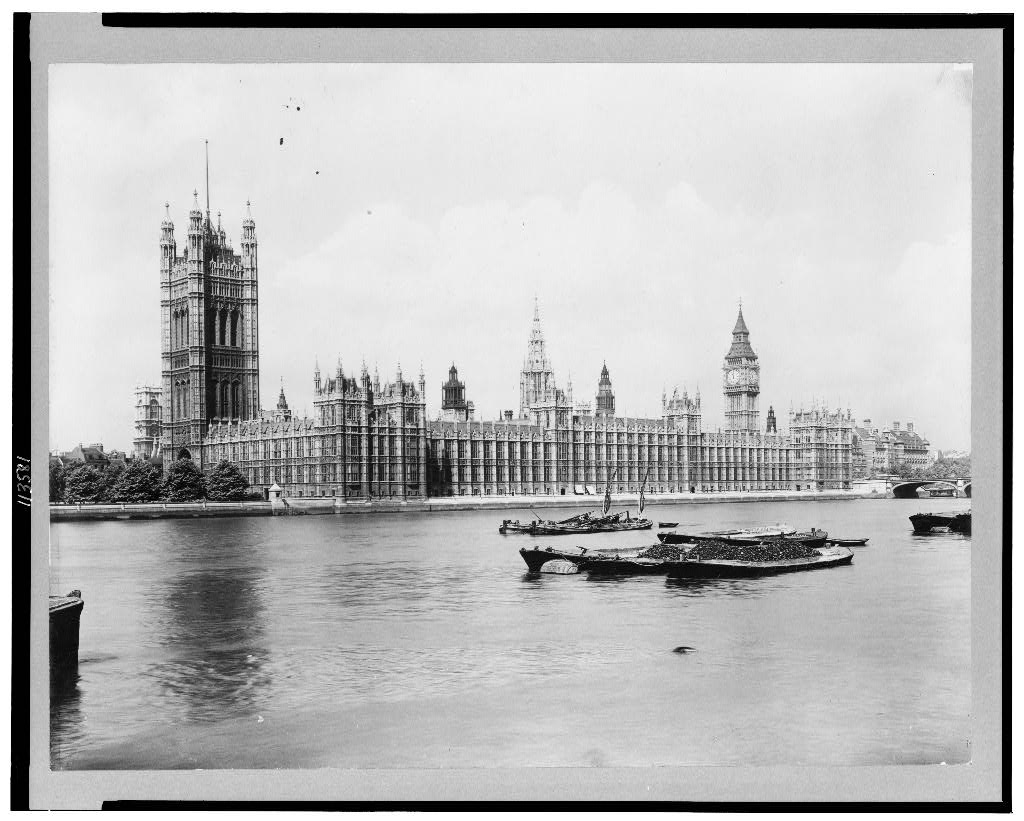
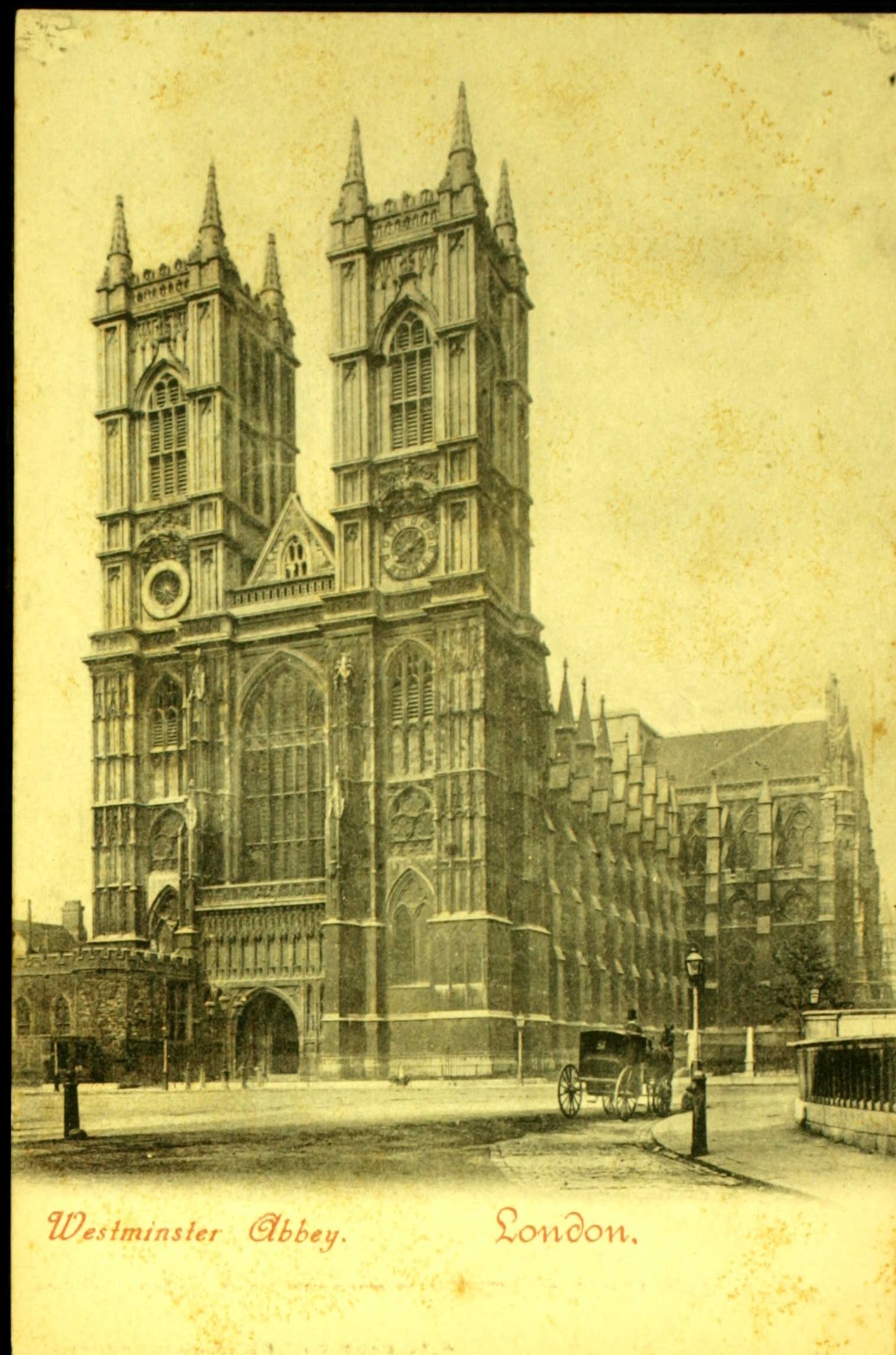
Top Left – British Museum, Bottom Left – Houses of Parliament and Thames River, Right – Westminster Abbey. Images from Library of Congress and Ancestry postcard images.
If the Orcutts and Mrs. Blackwell had done their homework, they would have read general works of art and history for each country they planned to visit. Guidebooks, such as those written by Thomas Cook Ltd or Karl Baedeker, provided travelers helpful tips to enhance their experiences abroad. They included recommendations for hotels and restaurants, learning a foreign language, financial matters (currency, going through customs, buying souvenirs), and advice for personal behavior, something every guidebook mentioned. Unfortunately, Americans did not have a good reputation for manners on the Continent.
“…unless travellers are willing to leave national prejudices behind them and ready to see whatever is characteristic and excellent in a foreign country, without finding fault because it is unfamiliar, they had better remain at home. Americans are among the worst offenders in this regard, and there is no greater nuisance than the man who growls because he cannot get buckwheat cakes or the woman who fusses when she has to do without iced water…while you are abroad, try to get all the pleasure and profit out of that visit.”[6]
Thomas Cook catered to American tourists and ensured that every detail enhanced the traveler’s comfort. However, Cook thought Americans were “…extroverted and outspoken, indulging in what he called ‘high airs and tall talk.’ A constant cause of friction was the Continental breakfast which seemed like an insult to people used to starting the day on steak. Another source of friction was the expectation of hoteliers that hotel guests would order wine with their meals and the American determination to drink iced water and coffee and not pay extra for it.”[7]
As young American ladies, Anna Ri (age 19), and Jane Clare (age 16), needed to be cautious in their interactions with strangers, both on the ship and while traveling on the Continent. Being courteous was acceptable, but a lady should not be too friendly, especially to men.
“The frank, level gaze with which the American girl, not thinking any evil, meets the eyes of men who are strangers to her is always startling to Europeans. Ladies in Europe, especially on the Continent, dress quietly when walking and wear very little jewelry in the daytime.”[8]
“A lady will be courteous to everyone out of self-respect, but effusiveness of manner is not thought in England to be an attraction…and by some classes of people, it may be misunderstood.”[9]
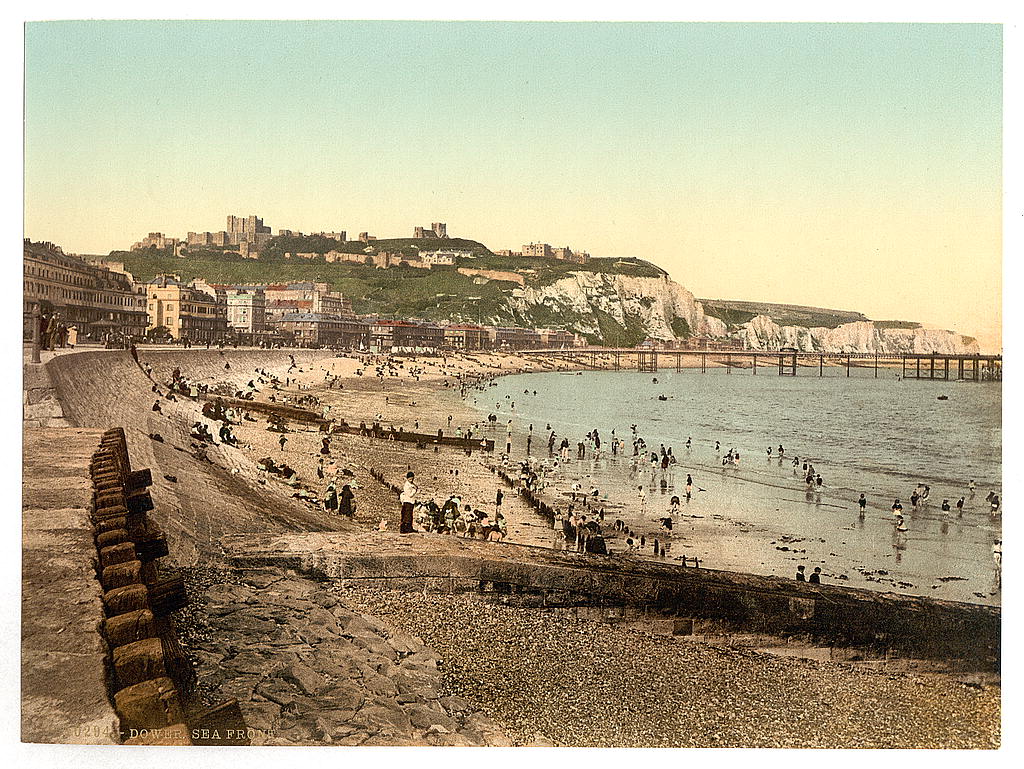
After about three days in London, the Orcutts likely journeyed by train to Dover. From there, they could catch a ship and travel 3 1/2 hours to Ostend on the coast of Belgium.[10] I based my assumption on Cook’s itinerary and page three in the Orcutt photograph album. It includes six pictures of beach and town scenes, that after close examination, led me to believe that the Orcutts took the photographs in Ostend and Blankenberghe, two popular Belgian coastal towns.
BELGIUM
- “The works of the painter and the architect are Belgium’s great attractions.
- Passports are not dispensed with in Belgium, but they are frequently useful in proving a traveller’s identity, procuring admission to collections, and in obtaining delivery of registered letters.
- Custom House formalities are generally very lenient. The traveller should always, if possible, superintend the examination of his luggage in person. In crossing a frontier, even the smallest articles of luggage usually kept in the railway carriage have to be submitted to inspection.
- French is still the language of the government, the army, of most of the newspapers, of public traffic… and indeed of all the upper classes, as it has been since the time of the crusades.”[11] Baedeker, Belgium and Holland: including the grand-duchy of Luxembourg, 1901.
The Orcutt sisters had the advantage of knowing a second language, which would have facilitated their travels in Belgium and France. Anna Ri and Jane had to study French when they attended Duchesne, Sacred Heart Academy in Omaha. You can read about their studies here.
OSTEND
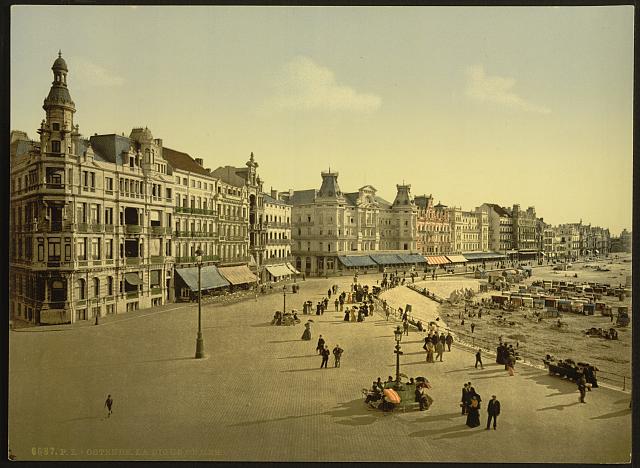
Cook’s tourist handbook noted Ostend as one of the principal avenues of passenger traffic between London and the Continent. It was also one of the most “popular and fashionable watering places in Europe.”[12] During the season, which lasted from June to October, 40,000-50,000 tourist visited Ostend for sea-bathing. Tourist could rent Bathing machines and tents on the beach for the day between 7 a.m. and 7 p.m.[13]
When I examine the photographs in the Album, I ponder why the photographer (Clinton, Anna Ri, or Jane) took that particular scene. The first picture on page three depicts a street undergoing repairs; large paving stones are stacked in piles, awnings shade the storefronts, and horses and carriages wait for their rides. The Café de l’Empereur (founded in 1764) is on the far right of the image. I searched Baedeker’s travel guidebook for Belgium and Holland for 1901 and found a Hôtel De L’Empereur in Ostend that included a restaurant.[14] Perhaps, the Orcutts went to the cafe, or they found the street repairs interesting?
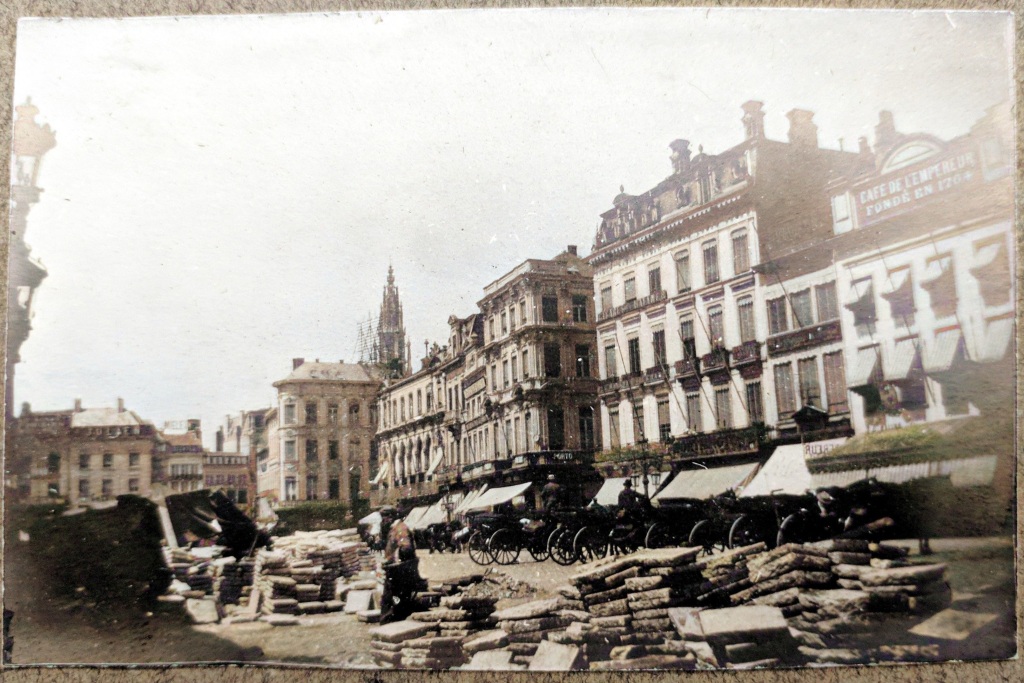
A second photograph taken on a city street is too blurry to read the storefront signs, but perhaps Jane or Anna Ri took the picture in Ostend?
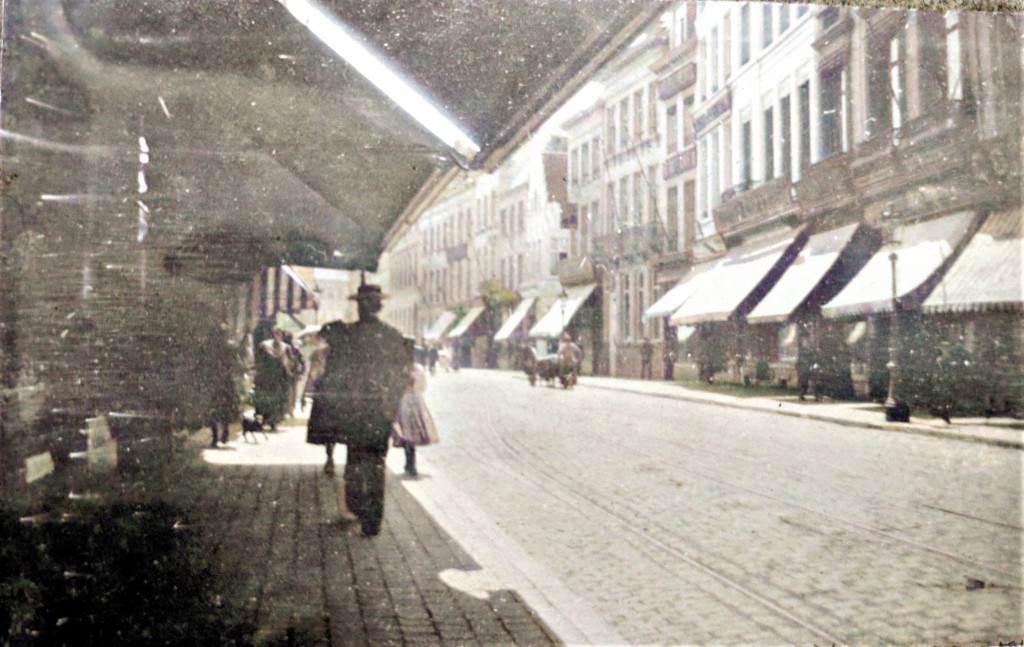
The third photograph featured a friend whom the Orcutts met while on their trip. Anna Ri and Jane seem to have become quite chummy with their new friend. The unnamed young lady appeared in eight pictures. In this photo, she is seated at a café under the shade of an umbrella. I recognize her by her hat; she usually wears glasses.

BLANKENBERGHE
Blankenberghe, located 10 miles to the N.W. of Ostend, was a small fishing town of about 4,300 inhabitants and a rival sea-bathing resort. It offered lower rates than Ostend and was “freer and less conventional.”[15]. Did the Orcutts rent swimsuits and enjoy sea-bathing?
I discovered several postcards of Blankenberge pier, built in 1894, which strongly resemble the photograph in the Orcutt Album. Images are from the Library of Congress.

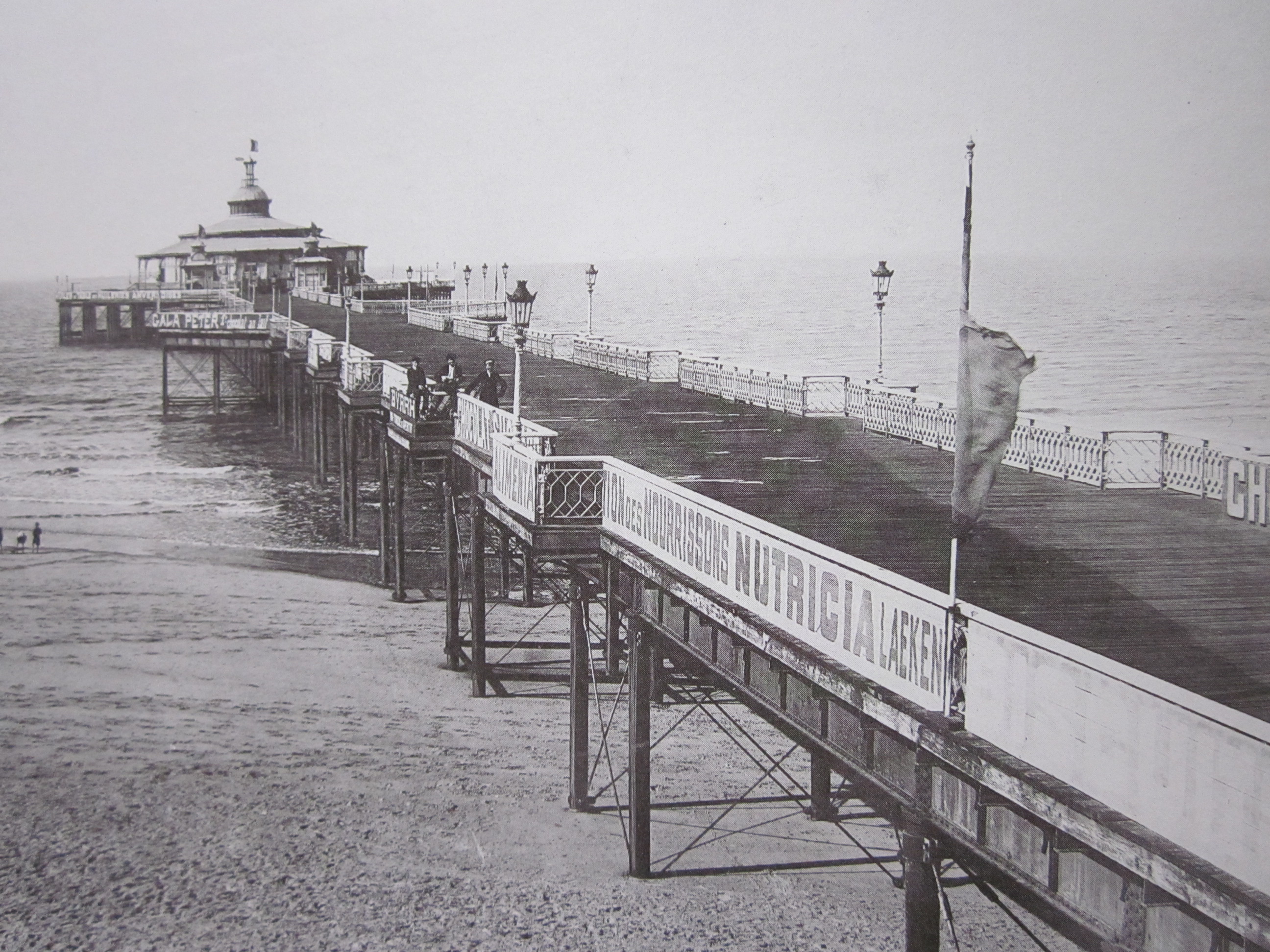


After the Orcutts toured Ostend, they likely traveled by train to Antwerp and Brussels. They may have taken the express train from Brussels to Cologne (Köln). This is where they probably began their tour of the Rhine (Rhein) River.
CUSTOMS and BORDER CROSSINGS
Each time the Orcutts crossed a border into a different country, they had to go through customs. The custom-house examinations were generally made at the station nearest the frontier. Every guidebook described the process as “one of the greatest drawbacks to the pleasures of foreign travel.”[16] Each country had different customs procedures, with the English being the most lenient and the French the strictest.[17]
“When landing in any foreign country, and whenever you cross the line between any two countries, you must go through the tedious farce of a customs house examination. It is tedious because it delays the journey from half an hour to two hours, at points utterly devoid of interest; and it is a farce for about all American tourists because they carry nothing on which duty is collected. Liquor, tobacco, and food are the things sought for more than anything else, and the traveler is likely to carry none of them in dutiable quantities.
The trunks are all taken from what we call the baggage car and what the English call the luggage van, placed on long tables, and opened when you produce the key. If you are good-natured and show no uneasiness, the examining official will make only the most cursory examination, often merely lifting the lid. If you claim two or three trunks, frequently you will be asked to open but one; don’t suggest which one it shall be, or the official will have another opened.”[18]
A fellow Omaha resident who traveled to Europe in the summer of 1901 described her frustrating experiences to the Omaha Daily Bee after returning home.
“Paying car fare and opening my baggage for inspection took most of the three months I spent in Europe. I guess they must have thought I was a diamond smuggler. Nearly every waking hour I was traveling, an inspector demanded that my luggage be opened. I became so accustomed to obeying orders that I sat with my keys in my hand, ready to open my trunk and traveling bag on a moment’s notice. Friends told me that if I would talk to the inspectors in an animated manner, they would pass my luggage without tumbling everything into a mess. The men who understood English seemed to grow more suspicious as I jabbered away at them. My German and French had no effect whatever on inspectors who speak only those languages. They only looked at me hopelessly and went on with their work of stirring things up.”[19]
The Orcutts and Martha Blackwell had completed their tour of England, Holland, and Belgium and were ready to visit the fourth country on their itinerary. A change of borders meant a shift in language and customs. Hopefully, they kept their travel guidebook at hand as it offered advice on every aspect of travel.
- Chance acquaintances must never be made in the street, except under extraordinary circumstances.
- “Before taking your place at a table d’hôte, you should bow slightly to the other persons at your table, and also when you get up to go away. People who omit to do this are thought very rude on the Continent, especially in Germany.“
- If you are next to a stranger at the table, it is allowable and indeed polite to talk with him or her, and if your neighbor is a man, it is your place to speak first. (This advice was for a female tourist.)
- In England, you don’t greet the shop people whereas on the Continent it is customary to say “good day” when you go into a shop in France, Italy, or Germany.
- “In England, as with us, a woman bows first in the street, but on the Continent, the reverse is the rule, and men speak first to women.”
- “The American custom that a man walking with a woman should always keep himself between her and the gutter is not known in Europe; a woman’s place is invariably on the man’s right hand, whether walking or driving.”
- If you walk or sit on a man’s left in Germany, it amounts to an admission that you are of a decidedly lower class. An older woman always sits on the right of a young one.”
- It is exceedingly bad form to be late at the table d’hôte.”[22]
- Three health tips to adhere to while traveling: “Don’t get overheated and then chilled; Don’t go too long without eating; Don’t drink water unless you are sure it is good.”[22]
TRAIN TRAVEL

Trains served as the most practical transportation from one city to the next. The railway cars differed from country to country but most offered first, second, and third-class compartments. Each railway car was divided by partitions parallel with the end of the car into compartments. The first class had eight seats (four facing front and four back) in a compartment, while the third class had ten, one more on each side. Some travelers felt the first-class compartments were superior to second-class. Still, Baedeker’s guidebooks stated there was no difference in Germany and very little in England, France, and Italy. An English proverb says that “only Americans and fools travel first-class.”[23] The comment was based on the sentiment that “there is more false pride in democratic America than in aristocratic Europe.”[23 If, as I surmise, the Orcutts booked a circular ticket through Thomas Cook or a similar agency, then they would have purchased first-class railway tickets.[24}
Dining cars were not as popular abroad as in the States due to the shorter distances traveled in Europe between cities. However, the Continental Express trains offered a restaurant and dining cars; otherwise, the passengers could procure food from the local station restaurant stops. Travel guidebooks recommended that the American tourists purchase an inexpensive hamper and fill it with picnic items to eat while underway. Since good water was not always available, a bottle of wine was a good addition. In Germany, beer was offered through the railway car windows at nearly every stopping place.[25]
PART III – to be continued
Join the Orcutts as they visit Germany, where they take a steamer up the Rhein River and visit Heidelberg castle. Then on to Switzerland, where they take an excursion on Lake Lucerne and drive from Interlaken to Grindelwald to see the glaciers. Their itinerary also included a three-day trip to Paris.
© 2022 copyright – Kendra Hopp Schmidt. All rights reserved
ENDNOTES
- [1] Karl Baedeker (Firm). (1901). Great Britain: handbook for travellers. 5th ed. revised and augm. Leipsic: K. Baedeker. P. xvii-xviii Digital Archives, Hathi Trust.org. https://babel.hathitrust.org/cgi/pt?id=uc1.$b192352&view=1up&seq=17&skin=2021&q1=expenses
- [2] Cooks Excursionist and Home and Foreign Tourist Advertiser, ( January 1892), Digital Books. Google Books.(https://www.google.com/books/edition/Cook_s_Excursionist_and_Home_and_Foreign/FU5DAQAAIAAJ?hl=en&gbpv=1)
- [3] Luce, Robert, Going Abroad? Some Advice. Boston, R & L Luce Publisher. 1900. Digital images. Archive.org, p. 24(https://archive.org/details/goingabroadsomea00luce/page/24/mode/2up?q=%22cook%27s+excursionist%22&view=theater)
- [4] Luce, Robert, Going Abroad? Some Advice. Boston, R & L Luce Publisher. 1900. Digital images. Archive.org, p. 12 (https://archive.org/details/goingabroadsomea00luce/page/12/mode/2up?q=%22cook%27s+excursionist%22&view=theater
- [5] Jones, M. Cadwalader. (1900). European travel for women: notes and suggestions. New York: The Macmillan company, p. 107. Digital Images. Hathitrust.org (https://babel.hathitrust.org/cgi/pt?id=loc.ark:/13960/t23b6jv19&view=1up&seq=123&skin=2021)
- [6] Jones, M. Cadwalader. (1900). European travel for women: notes and suggestions. New York: The Macmillan company; p.16. Digital images. Hathitrust.org.: accessed June 10, 2022.
- [7] Stowe, William W. (1994). Going Abroad: European Travel in Nineteenth-Century American Culture. Princeton, N.J. p. 110. Digital Archives. Archive.org (https://archive.org/details/goingabroadeurop0000stow
- [8] Jones, M. Cadwalader. (1900). European travel for women: notes and suggestions. New York: The Macmillan company, p. 16. Digital Images. Hathitrust.org. https://babel.hathitrust.org/cgi/pt?id=loc.ark:/13960/t23b6jv19&view=1up&seq=32&skin=2021
[9] Jones, M. Cadwalader. (1900). European travel for women: notes and suggestions. New York: The Macmillan company, p. 132. Digital Images. Hathitrust.org.(https://babel.hathitrust.org/cgi/pt?id=loc.ark:/13960/t23b6jv19&view=1up&seq=148&skin=2021)
[10] Karl Baedeker (Firm). (1901). Belgium and Holland: including the grand-duchy of Luxembourg; handbook for travellers. 13th ed., rev. and augm. Leipsic: K. Baedeker. Digital images. Hathitrust.org.
[11]Karl Baedeker (Firm). (1901). Belgium and Holland: including the grand-duchy of Luxembourg; handbook for travellers. 13th ed., rev. and augm. Leipsic: K. Baedeker. Digital images. Hathitrust.org
[12] Thomas Cook (Firm). (1901). Cook’s tourists’ handbook for Holland, Belgium: the Rhine and the Black Forest. London. Digital images. Hathitrust.org. (https://babel.hathitrust.org/cgi/pt?id=uva.x001492643&view=1up&seq=183&skin=2021&q1=blankenberghe)
[13] Karl Baedeker (Firm). (1901). Belgium and Holland: including the grand-duchy of Luxembourg; handbook for travellers. 13th ed., rev. And augm. Leipsic: K. Baedeker. P. 10. Digital images. Hathitrust.org.
[14] Karl Baedeker (Firm). (1901). Belgium and Holland: including the grand-duchy of Luxembourg; handbook for travellers. 13th ed., rev. and augm. Leipsic: K. Baedeker. P. 9. Digital images. Hathitrust.org.
[15] Karl Baedeker (Firm). (1901). Belgium and Holland: including the grand-duchy of Luxembourg; handbook for travellers. 13th ed., rev. And augm. Leipsic: K. Baedeker. P. 17. Digital images. Hathitrust.org.
[16] Thomas Cook (Firm). (1901). Cook’s tourists’ handbook for Holland, Belgium: the Rhine and Black Forest. London. p. 1. Digital images. Hathitrust.org (https://babel.hathitrust.org/cgi/pt?id=uva.x001492643&view=1up&seq=15&skin=2021&q1=%20rhine
[17] Holland, Evangeline. Edwardian England A Guide to Everyday Life 1900-1914. 2014 Plum Bun Publishing. Digital images. Books.google.com.
[18] Luce, Robert, Going Abroad? Some Advice. Boston, R & L Luce Publisher. 1900. Digital images. Archive.org, p. 192.
[19] Miss Tobit is at Home Omaha Librarian Returns from Extended Tour of Europe. Omaha Daily Bee, Omaha, Nebraska, August 8, 1901, pg.7. Digital images. Newspapers.com (https://newspapers.com: accessed January 16, 2022.)
[20] Jones, M. Cadwalader. (1900). European travel for women: notes and suggestions. New York: The Macmillan company, p. 13-15. Digital Images. Hathitrust.org. (https://babel.hathitrust.org/cgi/pt?id=loc.ark:/13960/t23b6jv19&view=1up&seq=31&skin=2021)
[21] Luce, Robert, Going Abroad? Some Advice. Boston, R & L Luce Publisher. 1900. Digital images. Archive.org, p139.
[22] Jones, M. Cadwalader. (1900). European travel for women: notes and suggestions. New York: The Macmillan company, p. 7. Digital Images. Hathitrust.org.
[23] Luce, Robert, Going Abroad? Some Advice. Boston, R & L Luce Publisher. 1900. Digital images. Archive.org, p. 54.
(https://archive.org/details/goingabroadsomea00luce/page/54/mode/2up?q=train&view=theater)
[24] Luce, Robert, Going Abroad? Some Advice. Boston, R & L Luce Publisher. 1900. Digital images. Archive.org, p. 55.
(https://archive.org/details/goingabroadsomea00luce/page/54/mode/2up?q=train&view=theater)
[25] Luce, Robert, Going Abroad? Some Advice. Boston, R & L Luce Publisher. 1900. Digital images. Archive.org, p. 58.
(https://archive.org/details/goingabroadsomea00luce/page/58/mode/2up?q=train&view=theater)
[26] Luce, Robert, Going Abroad? Some Advice. Boston, R & L Luce Publisher. 1900. Digital images. Archive.org, p. 61

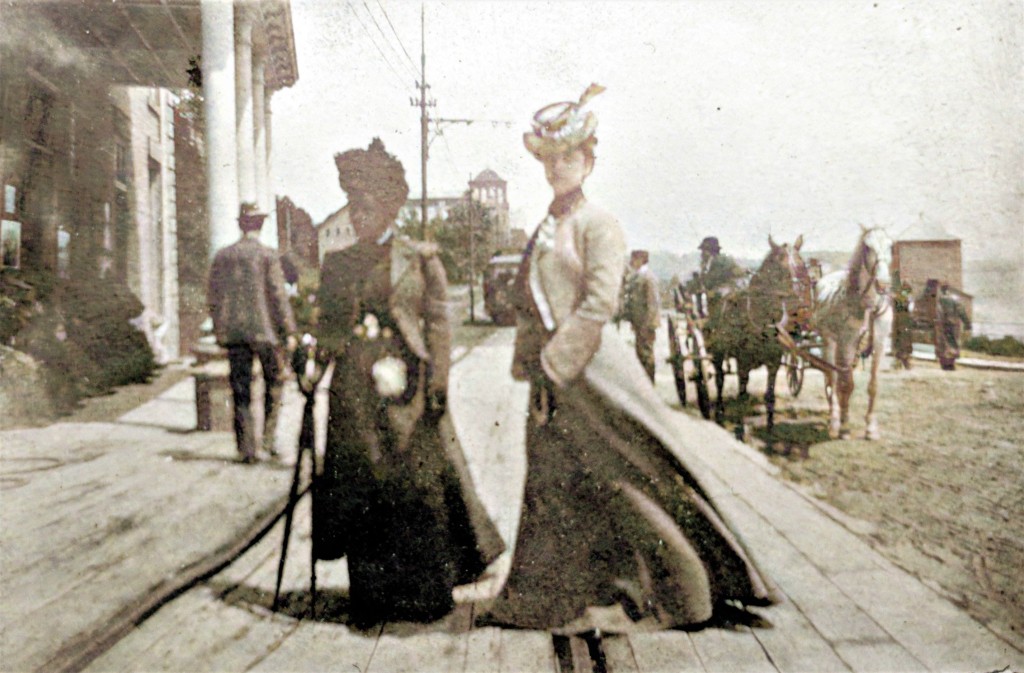

Pingback: GILDED AGE GIRLS – THE ORCUTT’S GRAND TOUR OF EUROPE 1901 – PART III- GERMANY | trekthrutime
Pingback: GILDED AGE GIRLS- THE ORCUTT’S GRAND TOUR OF EUROPE 1901 – PART IV -FRANCE AND SWIZTERLAND | trekthrutime